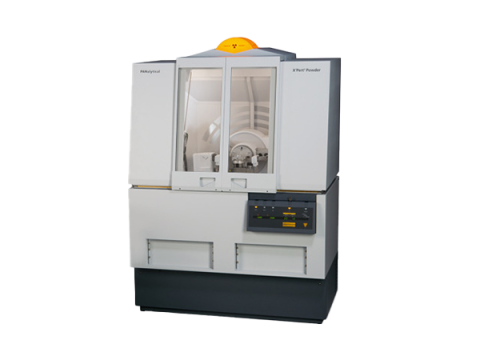
The PANalytical X'Pert Pro diffractometer is an excellent choice for X-ray powder diffraction (XRPD). The default mode of this instrument is in Bragg-Brentano parafocusing geometry, which is used for polycrystalline materials. We usually keep a linear position sensitive detector on the instrument, which permits rapid data collection for angles higher than 4 degrees 2Theta.
The basic instrument training session will focus on the collection of powder diffraction data using the high-speed optics, which consist of programmable divergence slits and X'Celerator high-speed detector, and the Open Eularian Cradle (OEC) sample stage. This configuration is best suited for high-speed high-resolution data collection from powders and polycrystalline thin films.
Accessories include several different sample stages and optics. After you have completed this training, you can request individaul training on the other configurations available with this instrument. There are three other sample stages that are available: (1) the 15 position automatic sample changer, (2) the furnace that can heat samples up to 1200 C, and (3) the cyrostat that can cool samples down to 11 K. The PANalytical also can be configured parallel-beam optics for grazing incidence X-ray diffraction (GIXD). After you have completed the basic training, you can request individual training on using the other configurations.
Users of this instrument should also strongly consider taking a data analysis course to suit their needs, such as the line profile fitting course for crystallite size and microstrain analysis, the Rietveld refinement series for quantitative phase analysis and unit cell analysis, or the Introduction to High Score Plus for qualitative phase identification and database search techniques.
Active MIT.nano user account is required to participate in this training. Please setup an account prior to registering for the training event.
